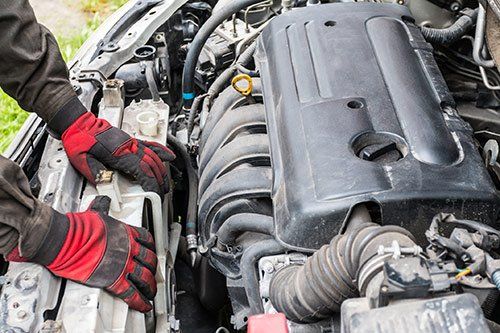3 Common Problems With Your Car’s Cooling System
- By Admin
- •
- 27 Apr, 2018

An automobile generates a staggering amount of heat as it operates — heat that stems directly from the thousands of controlled explosions happening inside of your engine. That kind of heat might lead to problems, were it not for your car's cooling system. The cooling system acts to absorb and displace heat, making it possible for your car to run continuously.
Given the enormous scope of its task, a car's cooling system can fall prey to a variety of different problems. Some of these may cause your car to overheat or stop working altogether. Others will have a more subtle — yet often equally damaging — effect. This article will help to improve your automotive troubleshooting skills by discussing three common cooling system problems.
1. Faulty Thermostat
Your car's thermostat represents the brain of the cooling system. By continually monitoring the temperature under your hood, the thermostat triggers the cooling system to commence activity when too much heat builds up. The thermostat physically controls the flow of coolant by opening and closing when certain temperature thresholds are reached.
However, when things go wrong with your thermostat, it may not respond in the appropriate way. If the physical mechanism at the heart of the thermostat breaks — often from excessive heat stress — then the thermostat may become stuck in a closed position. In other words, coolant will no longer circulate, no matter how hot your engine gets.
As you can probably guess, this problem often causes an overheating engine. You may also notice that your temperature gauge has begun to report excessively high temperatures.
Coolant leaks also tend to appear when a thermostat goes bad. These leaks typically form as the coolant backs up around the housing of the thermostat itself.
2. Trapped Air
Over time, air has a way of infiltrating a cooling system, where it can cause serious problems. The air often gets in through worn-out radiator lids, which isn’t really the problem — what causes the issues is when the air cannot get out. You see, one of the radiator lids jobs involves releasing any air bubbles that have built up in the coolant.
When air is in the coolant system it will cause temperatures to increase, putting your engine at risk of overheating.
Other heat-related issues may ensue. These include things like blown head gaskets, warped heads, and damaged valves and pistons. If a mechanic suspects that your cooling system suffers from the built-up air, then they will bleed the air out, before checking the radiator lid for potential problems.
3. Leaky Radiator Hoses
Coolant flows in a closed circuit between your car's radiator and its engine. The coolant shuttles back and forth through a pair of radiator hoses. Although these hoses are constructed of heavy-duty rubber, they still represent the most common source of coolant leaks. Unless dealt with quickly, such leaks will soon compromise the power of your cooling system.
Hose leaks usually occur as the result of degradation in the hose rubber. An experienced mechanic can often spot the signs of a hose nearing the end of its lifespan. Such a hose may appear frayed or cracked. It may also bulge out in places where the rubber has become excessively weakened.
If you have noticed puddles of greenish liquid underneath your parked car, you're probably dealing with a hose leak. In most cases, the only solution will be to have a new hose installed. Be sure to have your cooling system checked out by a professional as soon as possible.
For more information about keeping your cooling system in tip-top shape, please contact our automotive professionals at Kell Radiator Service.


